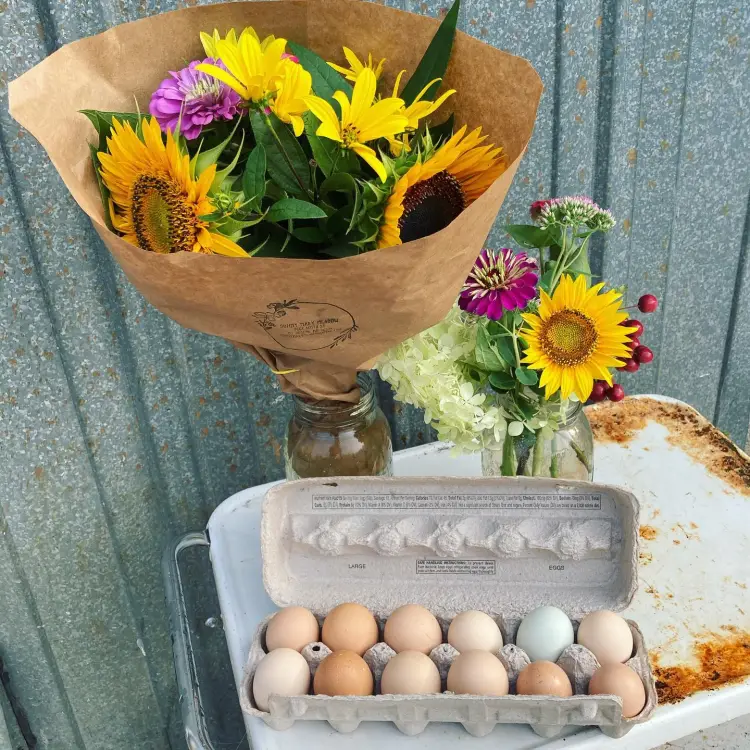Learning to do things “right” will save you a lot of time in the long run, but there are many aspects of growing cut flowers that you can skip to save time and money. However – learning proper harvest techniques is not one of them. You put all of this work into it so far, but it is not worth your hours and hours invested if the flower wilts in the jar. The number one tip I can give you – experiment. Do one vase of a particular flower the “right” way (if it’s supposed to be put in hot water, if it’s supposed to be cut early in the day, etc.) and do another vase of just standard harvest, and you can compare how long they last.
Some flowers (cosmos, for example) need to be cut when barely in the bud stage. Dahlias need to be fully opened. Zinnias need to have a firm stem (pass the “wiggle test”). In my first year, I put a bunch of basil, zinnias, and sunflowers in the fridge/cooler and killed them because I didn’t realize that they hate the cold. It takes time to memorize how each flower likes to be picked, but I promise it will eventually be like riding a bike. However, this is also why I try only to add 2-3 new flowers per year. I don’t want to accidentally kill buckets of them by picking them at the wrong time.
Harvesting at the coolest part of the day is so important, and that is often for me before 8 AM and after 7 PM. It depends on where your garden is located. My main garden gets shaded around 6 PM, so that helps, and that is why I’m moving my YouPick area to that location. I want people to be able to pick flowers in the evenings, but I don’t want the flowers so hot that they wilt in the vase right away. I also find that plants do best in the vase if freshly watered.
One thing I absolutely despise is taking the time to do, but I have realized the importance of the hard way is having clean buckets. I scrub them with soap and water every other day and bleach them weekly. You should be able to drink out of the bucket. Think about it like plumbing – if these flowers are soaking up dirty water, they will eventually get “clogged.” Just as cleaning buckets are essential, so is cleaning your snips or scissors. Bacteria make it difficult for water to reach the flowers.
You have probably heard this before, but flowers can take up the most water if you cut them at an angle. Do this right in the garden.
Cutting: When cutting, always cut your stems at an angle. By cutting at an angle, you are maximizing the space a stem has to take in water. After cutting the stem, strip all the foliage below the bucket’s water level. If this foliage is left on the stem, it will start to decompose in the bucket and dirty the water. Once the lower foliage is removed, place it directly in water.
When I harvest, I will work my way down an entire row. EVERY flower is addressed. It is either harvested, deadheaded, or left to mature. The only flowers that remain post-harvest are those that aren’t quite ready to be cut. And keep in mind that you will be slow in the beginning, and that is okay! Enjoy the harvest. Take in all of the beauty that you have cultivated. With time and practice, you will become more efficient. Some growers remove the majority of the foliage. I like to leave it on to act as greenery in a bouquet.


